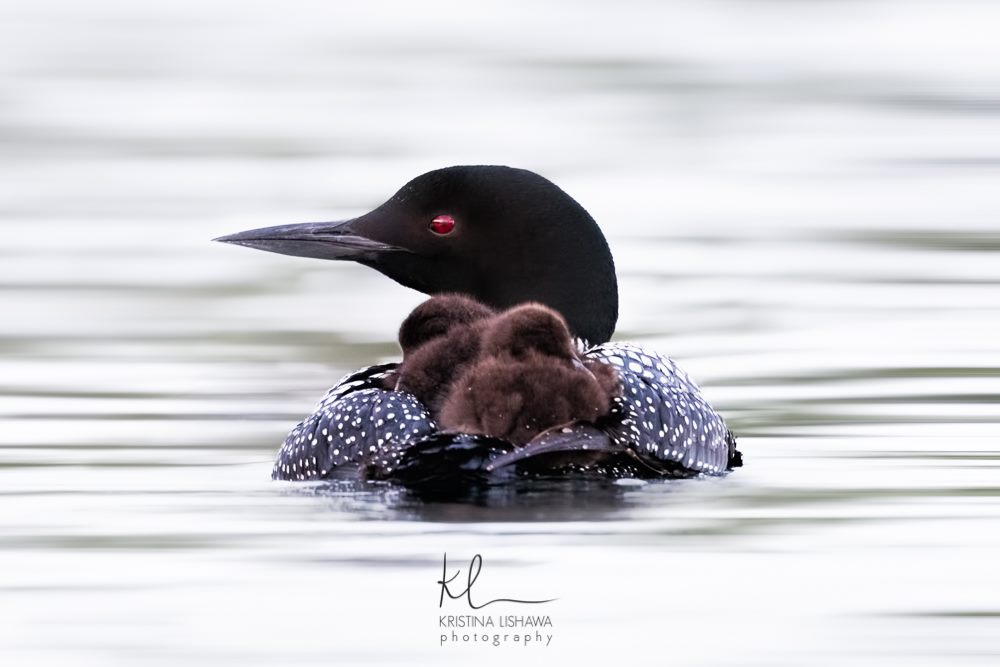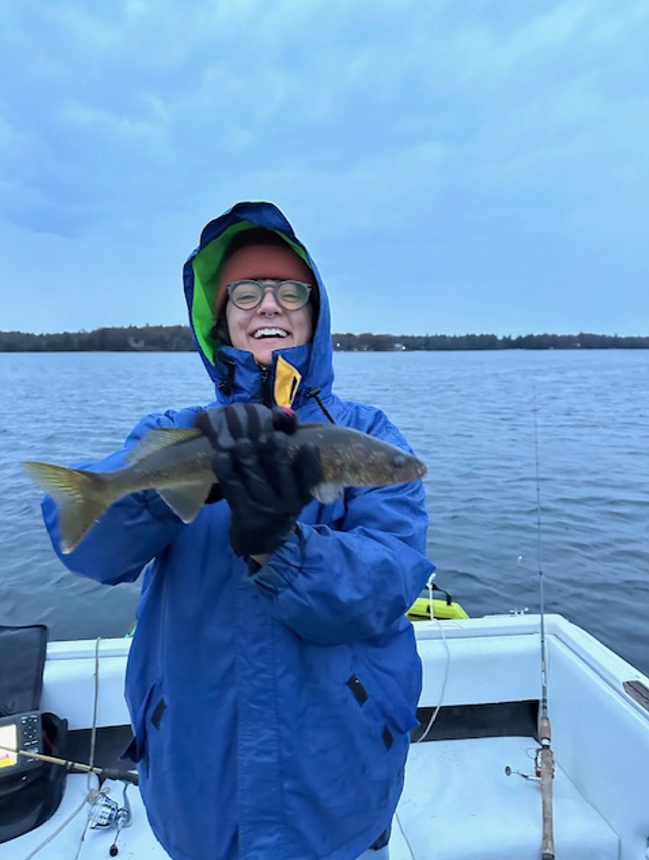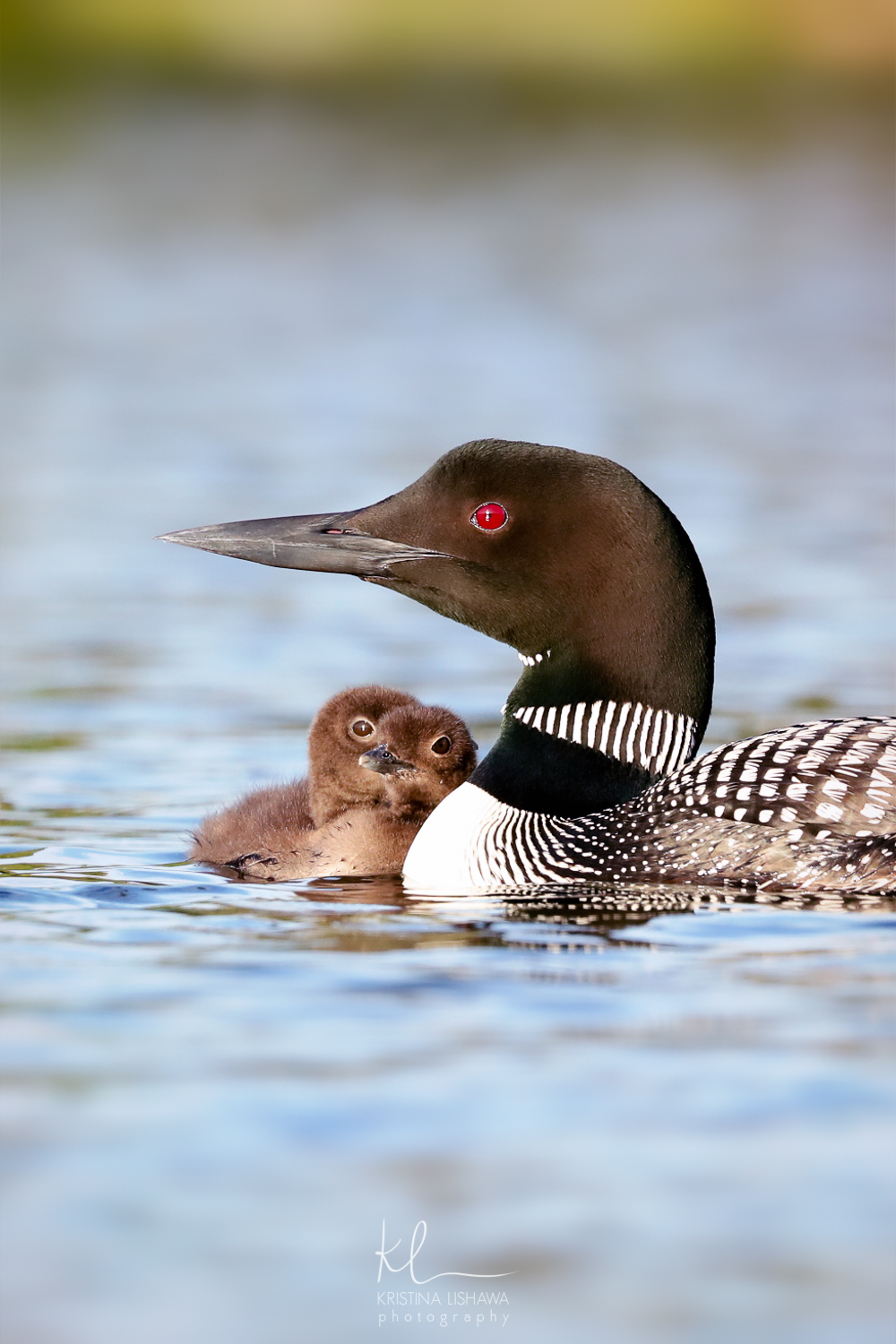WILDLIFE
CHAIR | PAT KESSEL
FISHING
Hooked on Fishing
Despite the historically low water levels in 2024, especially after midsummer and into fall, Long Lake continued to support solid fishing during the open-water season. On the other hand, ice fishing was a bit slower than usual. The snow that accumulated on the lake created a fair amount of water and slush between the ice and the snow, making it difficult to navigate. The good news is that the snow helps to support or increase the lake level.
The state’s Free Fishing Weekend on June 7th and 8th offers an excellent opportunity to get friends and family hooked on the sport. Licensing will be waived for residents and out-of-state visitors on both inland and Great Lakes waters for all fish species. All regulations will still apply. For information on regulations, online licensing, and more, visit https://www.michigan.gov/dnr/things-to-do/fishing.

Long Lake’s Walleye Stocking History
Many of us enjoy walleye fishing thanks to the state’s fish planting program. While successful seasons are now commonplace, the state recorded in the Creel Census only one walleye harvested from Long Lake between 1928 and 1948. The DNR’s online database tracks fish stocking going back to 1979. It reports walleye were first stocked in Long Lake in 1986. Between the initial planting of 6,720, and the last planting in 1995, nearly twelve million walleyes have been stocked. According to the DNR database, there have been no plantings of any species since 1995: https://www.dnr.state.mi.us/fishstock. A fish survey conducted by the DNR in the spring of 2017 was published in 2022. Per the survey, Long Lake continues to have high water quality and a solid and vibrant fishery. DNR has no current plans for additional fish plantings in Long Lake. The full report link can be accessed from the LLA website.
Maintaining the Walleye Population
While stocking is one component to managing a healthy walleye population, it is also important to facilitate spawning. One way is to be aware of and protect spawning areas in the lake. Another is to preserve the female walleye population. You may be excited to catch a twenty-three incher, but most walleye over twenty-two inches are females per studies of northern climate lakes. So, if you want to help Long Lake’s walleye thrive for future fishing, take a picture, and throw it back. Happy fishing!


OUR LOONS | Rick Dahlstrom
2023
9 chicks hatched from the 5 nesting sites in 2023. All hatched between May 26th and May 31st.
Ruth Lake – 2 1 Chick was lost to an eagle
Mickey Lake – 2 Both Survived
Fox Island – 2 Both Survived
Gingerwood – 2 Both Survived
South Cove – 1 Survived
After the adults left, 6 of the 9 juveniles were together east of Fox island on October 16th.
2024
With the early ice off the lake this year, the loons were back with a fair amount of time before their normal nesting period. Even with the colder temperatures since ice off, Long Lake volunteers have managed to get our five loon platforms in the water and ready for this year’s nesting season. Thanks to all who participated in getting this accomplished. You’re greatly appreciated!
Our enchanting loons have returned to Long, Mickey, and Ruth Lakes. This is an update as we approach the last day of April 2025.
As you may recall, our loons had a very productive season in 2024. Five loon pairs produced a total of nine chicks! Remarkably, all nine survived the summer and headed south last fall.
All five nesting platforms are out on the water at this point in the spring. Many thanks to the volunteers who ensure the nesting platforms get in the water shortly after the ice goes off the Lake. We know of two pairs that have already moved onto their respective nests and have observed pairs of adults hovering around the other platforms, just waiting for the “right” moment. Off to a good start, we will provide an update at the “Welcome Back to Paradise” event on June 2 at Boone’s Long Lake Inn.
Our loons are one of our most precious natural resources on Long Lake. We are fortunate to have one of the largest loon populations in the Lower Peninsula. Please help in protecting these most sensitive and territorial birds. Give them at least 200 feet of space (about eight boat lengths) when around their platforms or approaching them on the open water. Please do not fish around the platforms while they are still on their nest. The gestation period for loons is around 30 days so we should have some chicks by June 1st. Once hatched, the parents and chicks leave the nest and stay out on the open water for the remainder of Summer. Please provide this guidance to any boater guests or renters you may host this year. Have a great Summer, be safe and help us in protecting our special bird friends!
DUCKS, SWANS AND GEESE
Though cute and irresistible, these waterfowl play a key role in the life cycle of any parasite that causes “swimmer’s itch.”
By discouraging unnaturally large waterfowl populations in our lakes, the occurrence of this troublesome skin irritation can be reduced. (See Cercariae Cycle Diagram.)
As inhabitants of our lake community, these waterfowl feed on plants and other aquatic organisms. In turn, they eat the plants and remove a portion of the plants’ nutrients. When excreted, these nutrients support new plant growth. This is a natural cycle. However, when well-intentioned individuals feed waterfowl their numbers increase, and additional nutrients enter our lakes. This process, in turn, increases the swimmer’s itch problem.
FISH
The fish survey conducted by the DNR in the spring of 2017 has been published.
The report noted that the Bluegill numbers have “exploded,” showing a 686% increase (98/673) in the number of fish taken compared to the 2007 survey. The Largemouth Bass numbers increased 265% (64/170), and Northern Pike increased 208% (12/25), with a broader range of fish sizes from 11-43 inches. There was a significant increase in the Perch and Rock Bass population. The Walleye, Smallmouth Bass, and Pumpkinseed numbers were similar in size and numbers taken to the 2007 report. The report noted an abundance of forage species in the lake, with far more Shiner minnows present than in 2007. Growth rates were considered suitable for all species.
The DNR is planning to do a Walleye and Pike survey in the spring or fall of 2022 to understand better and manage their populations and determine if further stocking is needed.
The DNR encouraged landowners to reduce fertilizer and chemical treatments and discontinue the practice of clearing nearshore plant growth as they may be contributing to dissolved oxygen depletion and increased temperatures within the lake.
Long Lake continues to have the highest water quality and a solid and vibrant fishery. The full report link can be accessed from the LLA website, or you can download it at: https://longlakeassociation.com/wp-content/uploads/2022/01/SFR2018-262_740719_7.pdf

NUISANCE WILDLIFE
LAKE ETIQUETTE
Remind Your House Guests / Renters of the Following Lake Rules:
- If you rent your home/cottage, please remind guests that your neighbors are year-round residents. Please be respectful and keep noise low, especially in the evenings. Turn off outdoor lights before going to bed as these can shine directly into neighboring houses and even into homes across the lake.
- To file a complaint about a short-term rental, call the Long Lake Township complaint hotline anytime at (231) 600-7044. You can also call the office during regular hours – 8:00 am through 5:30 pm (closed at noon), Tuesdays through Fridays – at (231) 946-2249.
- For those operating a wave runner, the law states that a person shall not operate a PWC on the waters of this state from sunset to 8:00 A.M local time. Contact Marine Patrol at (231) 922-2112 to report violators. For more boater safety information, please go to https://mymlsa.org.
- Please be mindful and respectful of the many loons and other wildlife when on the lake. Many loons will have young with them, which are hard to see. Loon Watch’s general rule of thumb for good loon etiquette is to keep a distance of two hundred feet from loons and loon chicks. State and federal laws prohibit the disturbance and harassment of the loons and wildlife. There is a $1,000 fine for harassing a loon in Michigan. Report complaints to Traverse City DNR at (231) 922-5280 or Marine Patrol at (231) 922-2112. If this is not successful, contact the DNR at their 24-hour RAP line per the info below:
- If you witness a natural resource violation (e.g. loon harassment, poaching, etc.), contact the DNR REPORT ALL POACHING (RAP) line at 800-292-7800 (CALL OR TEXT). The RAP Center is staffed 24 hours, seven days a week. Please take pictures/video, if possible, per the DNR’s request. Video is highly preferred! Please provide the MC number of the offending watercraft when reporting incidents. Otherwise, no action can likely be taken.
